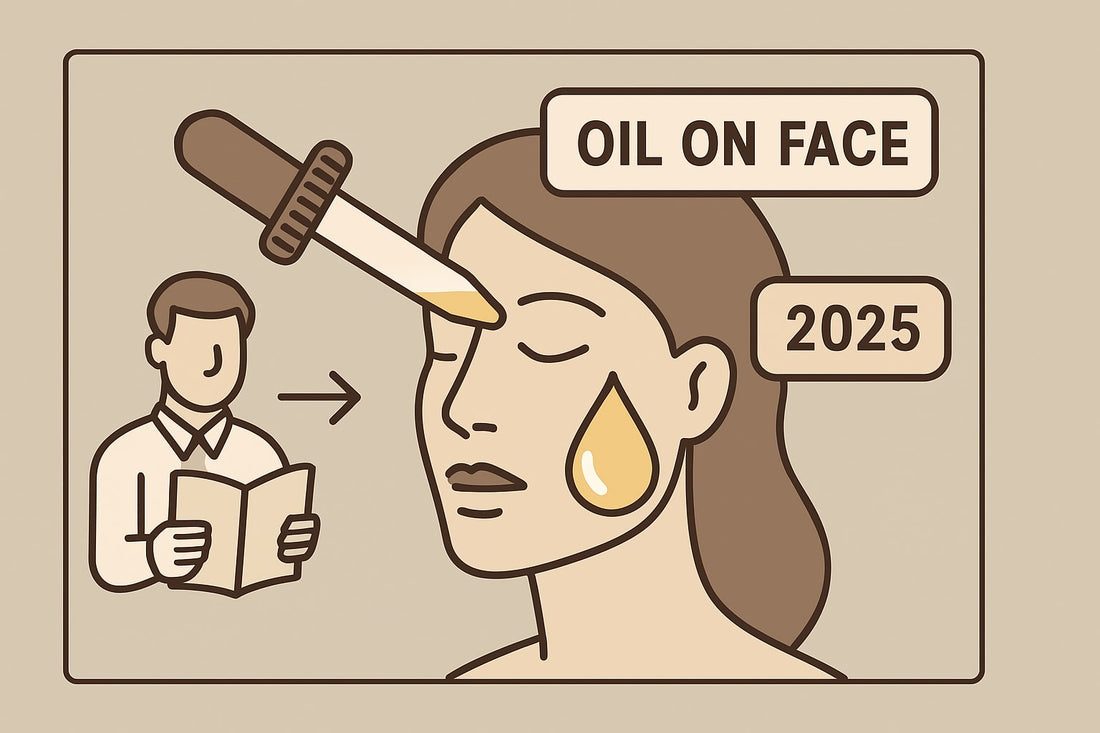
Oil on Face Guide: Expert Tips and Insights for 2025
The conversation around using oil on face routines has never been more heated or fascinating. In 2025, facial oils are everywhere, but so are the myths and debates about which ones truly serve your skin’s unique needs.
With so many options, it’s easy to feel lost about how oil on face products fit your skin type or concerns. Should you trust natural plant oils, new full-spectrum extracts, or tech-driven blends?
This guide cuts through the confusion with expert advice, up-to-date science, and the very latest in product innovation. You’ll discover how to make oil on face work for you, no matter your goals or skin type.
Ready to dive in? We’ll cover oil types, proven benefits, step-by-step application, expert picks, and powerful natural solutions like full-spectrum Mānuka extract. Let’s unlock healthier, more radiant skin together.
Understanding Facial Oils: Myths, Science & 2025 Trends
The world of oil on face care is evolving rapidly, and understanding the science behind it is more important than ever. Many people are curious about how facial oils work, especially as more brands highlight innovative extracts like Mānuka. This section explores the science, debunks myths, covers major 2025 trends, and helps you choose the ideal oil on face for your unique skin.
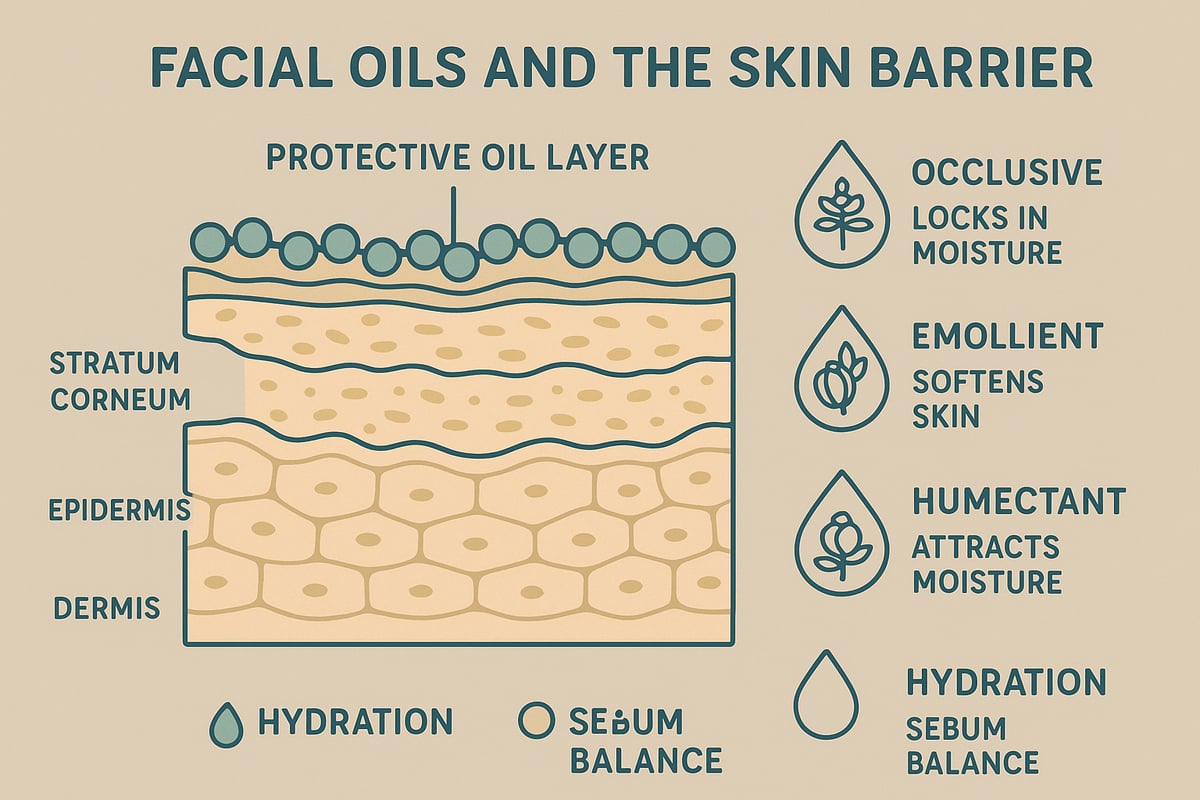
The Science Behind Facial Oils
When you apply oil on face, you are not just adding moisture. Facial oils interact with the skin’s barrier, supporting its natural defences and helping to regulate sebum production. Oils can be occlusive, forming a protective seal to lock in hydration, or emollient, smoothing and softening the skin. Some, like jojoba and Mānuka, also have humectant properties, drawing water into the upper layers.
Recent dermatological studies show a 45% reduction in transepidermal water loss when certain oils are used consistently. The comedogenic rating system, which measures how likely an oil is to clog pores, is not as clear-cut in real-world use. Many non-comedogenic oils, such as jojoba and Mānuka, are well-tolerated even by acne-prone skin. The unique triketones in Mānuka oil offer added antimicrobial benefits, making it a standout choice for those seeking more than just basic hydration.
Here’s a quick comparison of oil properties:
|
Oil Type |
Main Benefit |
Example |
|---|---|---|
|
Occlusive |
Locks in moisture |
Squalane |
|
Emollient |
Softens skin |
Rosehip |
|
Humectant |
Attracts water |
Jojoba |
Choosing the right oil on face can transform your skin barrier health and resilience.
Debunking Common Myths
There are plenty of myths about using oil on face, especially the idea that oils automatically cause breakouts. In reality, not all oils clog pores. The structure and purity of the oil matter much more than the myth suggests. For example, natural oils like Mānuka and rosehip are known for their soothing, non-comedogenic qualities.
Another misconception is that only dry skin benefits from facial oils. Oily and combination skin types can also see improvements when the right oil on face is chosen. Jojoba oil, for instance, mimics the skin’s own sebum, helping to balance oil production without causing congestion.
Differences between natural, synthetic, and mineral oils are important, too. Natural plant oils often contain beneficial bioactives, while synthetic or mineral oils may lack these skin-supportive compounds. Always check ingredient lists and patch test before adding a new oil on face to your routine.
2025 Skincare Trends
The rise of personalised skincare is shaping how we use oil on face in 2025. AI-driven skin analysis helps match users with their ideal oil blends, while sustainability and traceability are front of mind for conscious consumers. More people are seeking bioactive-rich oils from native plants, with Mānuka, jojoba, and squalane topping the list.
A 2024 survey found that 62% of skincare enthusiasts prefer natural oil-based products. Brands are responding with advanced extraction methods and full-spectrum formulas that preserve the unique compounds in oils. If you want a deeper dive into these global shifts, check out Facial Oils in Global Skincare.
Table: Top 2025 Oil Trends
|
Trend |
Example |
|---|---|
|
Personalised blends |
AI-matched oils |
|
Sustainable sourcing |
NZ Mānuka |
|
Bioactive focus |
Triketones |
|
Ingredient transparency |
Full-spectrum |
The oil on face movement is becoming smarter, greener, and more tailored than ever.
Choosing the Right Oil for Your Skin Type
Selecting the right oil on face depends on your skin’s unique needs. Dry skin often thrives with richer oils like rosehip or squalane, which restore and protect. Oily or acne-prone types benefit from lighter, balancing oils such as jojoba or Mānuka, both praised for their non-clogging, soothing properties.
Sensitive or problematic skin calls for gentle, anti-inflammatory options. Mānuka extract is gaining traction for its ability to calm irritation and support healing. Always patch test a new oil on face before full application, and prioritise brands that share transparent ingredient sourcing.
Here’s a quick guide for choosing your oil on face:
|
Skin Type |
Recommended Oil |
|---|---|
|
Dry |
Rosehip, Squalane |
|
Oily |
Jojoba, Mānuka |
|
Sensitive |
Mānuka, Oat |
|
Mature |
Rosehip, Mānuka |
By matching oil properties to your concerns, you unlock the full potential of oil on face care—naturally and effectively.
Key Benefits of Using Oils on the Face
Facial oils are more than just a passing trend. The right oil on face can deeply hydrate, replenish, and protect your skin barrier, giving your complexion that healthy, luminous glow. Unlike many traditional creams, facial oils mirror the skin’s natural lipids, meaning they absorb easily and help prevent moisture from escaping.
Applying oil on face also enhances the effectiveness of your other skincare favourites. When layered correctly, oils help active ingredients penetrate deeper, making serums and treatments work harder for you. This is especially useful if you’re targeting specific concerns, as oils can act as a delivery system, ensuring your skin gets the most out of every step in your routine.
One standout benefit of using oil on face is its ability to calm irritation and reduce redness. Certain plant-based oils, like full-spectrum Mānuka, contain potent bioactive compounds that soothe inflammation and fight bacteria. In a 2024 clinical trial, Mānuka oil reduced acne lesions by 38%, highlighting its antimicrobial and anti-inflammatory power. Antioxidants in these oils also shield your skin from environmental stress, helping you maintain a vibrant, even tone.
Looking to slow the signs of ageing? Oils are packed with vitamins and essential fatty acids that support skin elasticity, smoothness, and resilience. Regularly applying oil on face can help prevent premature wrinkles and support your skin’s natural bounce. Balanced sebum production is another key advantage, as the right oil can regulate excess oiliness or replenish dry patches without clogging pores.
For those struggling with sensitive or problematic skin, plant-based oils offer real relief. Many people battling eczema or chronic dryness have shared their success stories, finding comfort and visible improvement after just a week of consistent use. For a closer look at these experiences, see the Eczema trial week one results, which highlights the soothing potential of full-spectrum Mānuka extract.
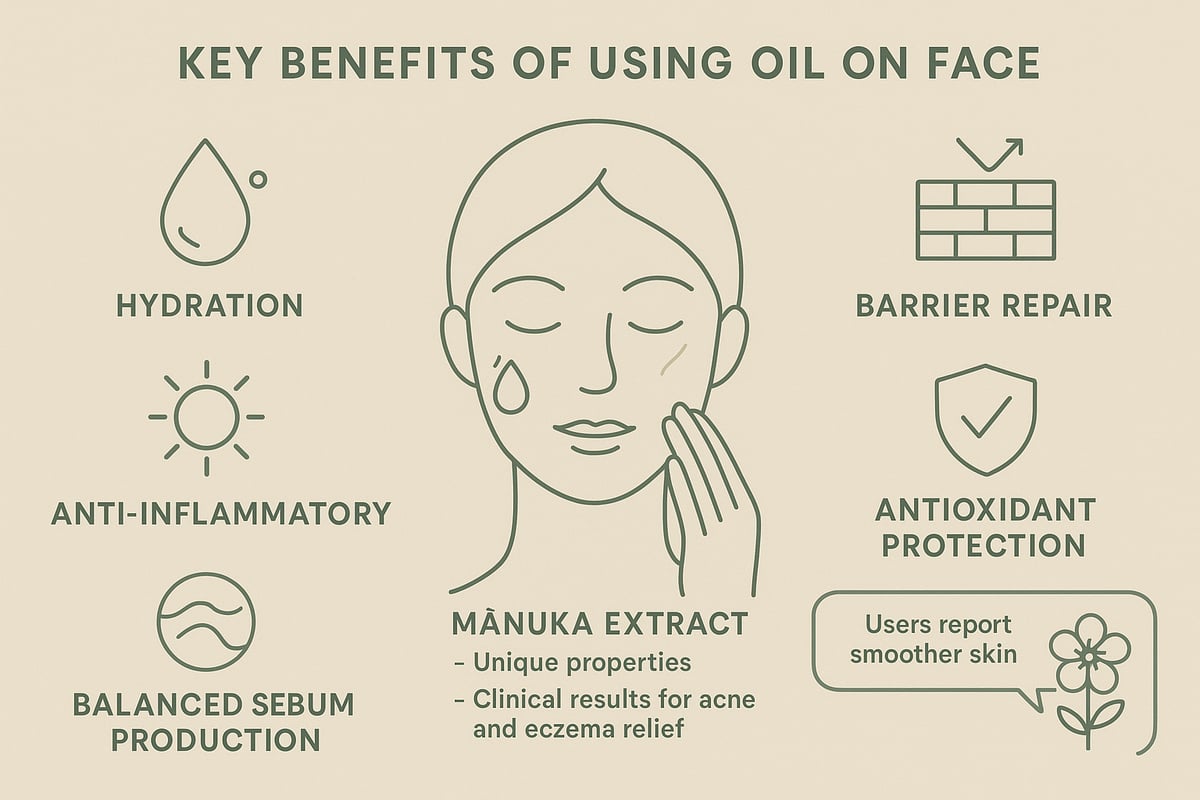
Step-by-Step Guide: How to Apply Oil on Your Face for Maximum Results
Applying oil on face is a ritual that blends science with self-care. The right technique transforms an ordinary routine into a powerhouse for skin health. Follow these expert-backed steps for optimal results, whether you’re new to facial oils or a seasoned enthusiast.
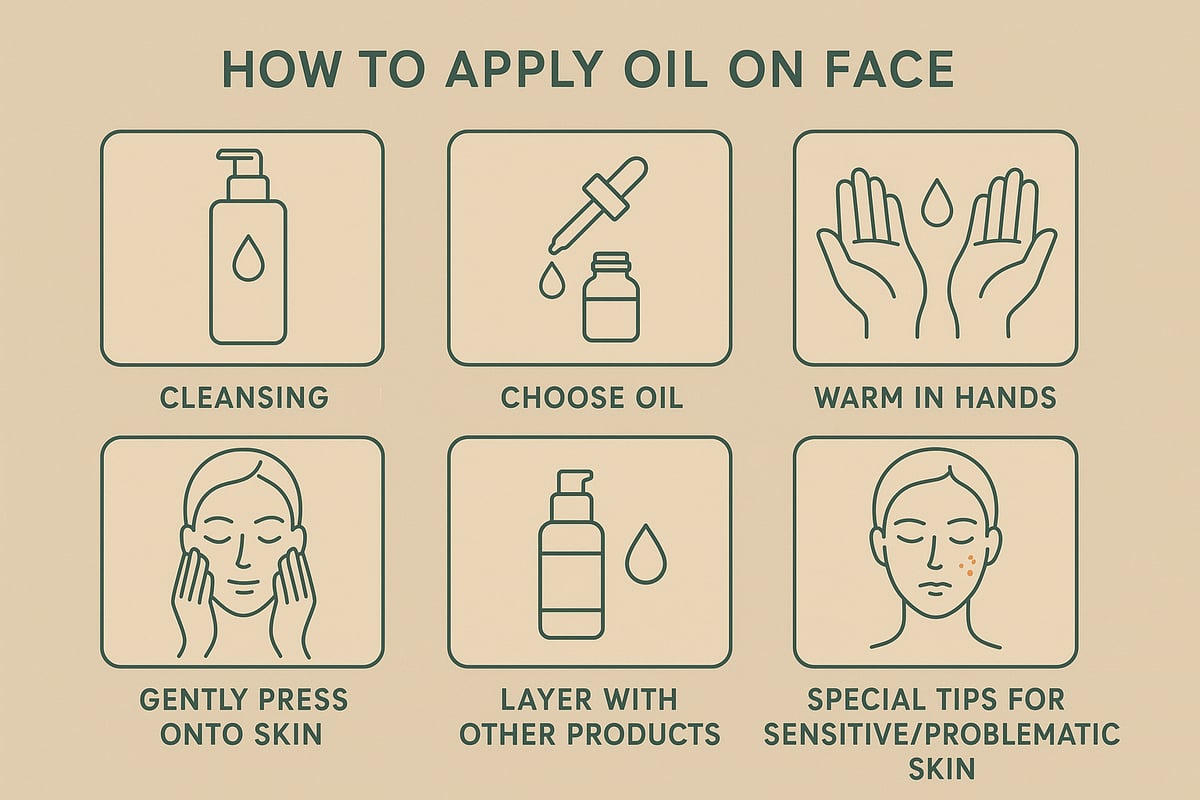
Step 1: Cleanse and Prep the Skin
Start with a clean, slightly damp face to maximise the benefits of oil on face. Cleansing removes dirt, makeup, and excess sebum, ensuring your skin is primed for nourishment.
If you wear makeup or sunscreen, double cleansing is ideal. Use a gentle, non-stripping cleanser to avoid irritation. Avoid harsh soaps or exfoliants just before applying oil, as these can disrupt your skin barrier.
Pat your skin gently with a towel, leaving a hint of moisture. Hydrated skin absorbs oils more effectively, enhancing their performance.
Step 2: Choose the Right Oil and Amount
Selecting the right oil on face is crucial for results and comfort. Match your oil to your current skin condition—think jojoba for oily skin, rosehip for mature skin, or Mānuka for sensitive or problematic skin.
Quality matters. Pure, unrefined oils retain more beneficial compounds. When possible, opt for oils produced through clean extraction methods. For example, how supercritical extraction works ensures high purity and potency without harsh solvents.
Use 2–3 drops for most oils. For blends, ensure ingredients are transparent and patch test new products.
Step 3: Application Technique
Gently warm the oil on face between your palms. This activates the oil and ensures smooth, even distribution.
Press your hands onto your face, starting with drier or problematic areas. Avoid rubbing, as this can cause friction and redness.
Focus on areas needing extra care, like cheeks or the forehead. For a spa-like touch, try light tapping or massage to boost absorption and circulation.
-
Warm oil in hands
-
Press, don’t rub
-
Target dry/problem zones
Consistency in technique leads to better, more radiant results.
Step 4: Layering with Other Skincare Products
Layering is key for maximising the benefits of oil on face. Apply oils after serums but before sunscreen in your morning routine. At night, use oil as the last step to lock in moisture.
Check compatibility with actives like retinol or vitamin C. Some oils enhance absorption, while others may cause pilling if overused.
If layering, wait a minute between steps. This prevents product conflicts and ensures each formula penetrates as intended.
Step 5: Frequency and Timing
How often you use oil on face depends on your skin’s needs, climate, and season. For many, nightly use delivers deep hydration and repair. Some enjoy a morning glow by applying a lighter oil.
Listen to your skin. If it feels congested, cut back. In dry or cold weather, you may need more frequent application.
Track results and adjust accordingly. Consistency and observation are your best guides.
Step 6: Special Application Tips for Problematic Skin
For acne-prone, eczema, or sensitive skin, using oil on face requires extra care. Choose non-comedogenic oils and always patch test.
-
Spot treat blemishes or dry patches
-
Avoid fragranced or mineral oils
-
Introduce new oils gradually
If your skin barrier is compromised, start with minimal application and build up slowly. Mānuka oil, known for its soothing properties, can be a gentle option for troubled skin.
Spotlight on Natural Solutions: Full Spectrum Mānuka Extract for Facial Care
The search for the perfect oil on face solution has led many to discover the remarkable properties of full spectrum Mānuka extract. This natural powerhouse stands apart in the world of facial oils, offering a complex blend of bioactive compounds that work with the skin’s own defences. Recent studies show that Mānuka extract not only hydrates, but also helps restore balance in irritated or sensitive skin.
What makes Mānuka unique? Its high concentration of triketones and antioxidant content gives it a potent edge over more common oils. These compounds allow Mānuka to support the skin barrier, soothe inflammation, and help reduce visible signs of stress. For anyone looking to upgrade their oil on face routine in 2025, Mānuka’s bioactivity is a game changer.
Why Mānuka Extract is Gaining Attention
Full spectrum Mānuka extract is quickly becoming the gold standard for anyone using oil on face treatments. Unlike common oils, Mānuka contains a unique mix of triketones, flavonoids, and polyphenols. These elements have been shown to offer strong antimicrobial, anti-inflammatory, and antioxidant effects.
Recent dermatological research has highlighted Mānuka’s ability to reduce breakouts, calm redness, and support healing in conditions like eczema and dermatitis. Clinical studies found that regular use of Mānuka extract can visibly improve skin clarity and decrease irritation. For those struggling with persistent skin issues, this oil on face option delivers both immediate comfort and long-term support.
Waipu Extracts: Full Spectrum Mānuka for Skin Health
Waipu Extracts sets a new benchmark by preserving the full spectrum of Mānuka’s natural benefits. Their process captures the entire range of active molecules, ensuring that every drop delivers maximum efficacy. Compared to standard or synthetic alternatives, Waipu’s extract retains delicate triketones and antioxidants that are often lost in conventional refining.
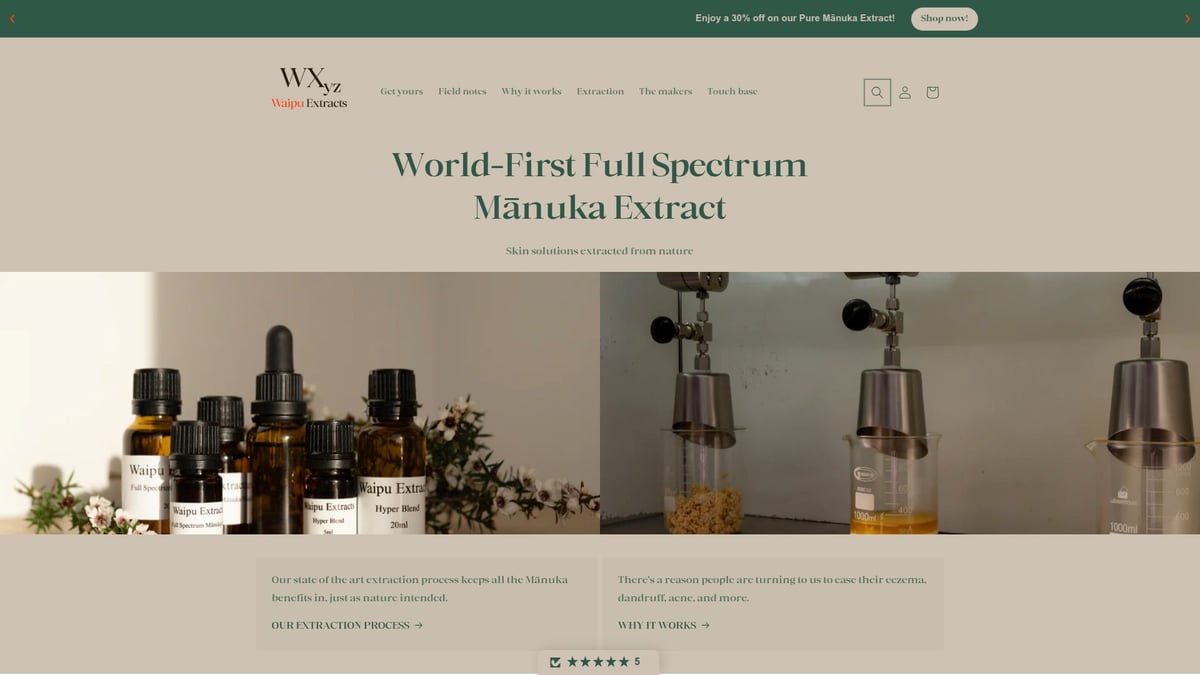
Customer testimonials highlight rapid relief from acne, eczema, and scarring. Many report noticeable improvements in skin texture and resilience after switching to this oil on face solution. Clinical findings back this up, showing real-world healing and reduced inflammation.
|
Feature |
Full Spectrum Mānuka |
Standard Mānuka Oil |
Synthetic Alternatives |
|---|---|---|---|
|
Triketone Content |
High |
Medium-Low |
None |
|
Antioxidant Activity |
Full |
Partial |
Minimal |
|
Clinical Efficacy |
Proven |
Variable |
Not established |
|
Sustainability |
Transparent |
Varies |
Industrial |
For more on the science and clinical results, see Why our Mānuka extract works.
Incorporating Mānuka Extract into Your Routine
Introducing a new oil on face product, especially one as potent as full spectrum Mānuka, starts with a simple patch test. Apply a drop behind the ear or on the wrist, then wait 24 hours to check for any reaction.
Once you’ve established compatibility, begin by layering the extract after cleansing and before your moisturiser. For best results, use 2–3 drops, pressing gently into damp skin, and focus on areas prone to irritation or breakouts. Mānuka extract can be blended with lighter oils or serums if desired.
Most users find that applying this oil on face once daily, preferably at night, brings visible benefits within a few weeks. Always adjust frequency based on your skin’s feedback, and remember, consistency is key for lasting results.
Expert Tips and Mistakes to Avoid When Using Oils on Your Face
Using oil on face routines can be transformative, but only if you approach them with care and the right information. Expert advice helps take the guesswork out of choosing, applying, and maximising the benefits of facial oils, especially as new research and innovations emerge.
Dermatologist-Backed Best Practices
Dermatologists agree: the foundation of success with oil on face routines starts with patch testing. Always test a small amount on your inner arm or behind your ear for 24 hours before using a new oil on face. This step is especially vital with potent extracts like Mānuka, which offer powerful bioactive benefits.
Customising blends is another expert tip. Adjust your oil on face choices seasonally or in response to hormonal changes. For example, lighter oils may suit humid summers, while richer oils help in dry winters. Always select oils based on your skin’s current state.
If you’re using professional treatments like microneedling or peels, consult your dermatologist about when to reintroduce oil on face products. Some oils, such as those rich in triketones, like Mānuka, can support healing and barrier repair. To learn more about these unique compounds, read What are triketones in Mānuka oil.
Common Mistakes and How to Avoid Them
A frequent mistake with oil on face routines is over-applying. Just two to three drops are enough for most people. Using too much oil on face can lead to congestion and a greasy finish, especially if you have combination or oily skin.
Another pitfall is choosing oils without checking comedogenic ratings. Some oils, like coconut, are more likely to clog pores, while jojoba and Mānuka are generally non-comedogenic. Always scrutinise ingredient lists, avoiding hidden fragrances or allergens that can irritate sensitive skin.
Applying oil on face without cleansing or exfoliating first is another misstep. Oils work best on clean, slightly damp skin. If your skin feels heavy or breaks out, revisit your routine and consider patch testing again.
Special Considerations for Sensitive and Mature Skin
If your skin is sensitive or mature, the right oil on face can offer soothing relief and support barrier repair. Choose hypoallergenic, fragrance-free oils and avoid formulas with unnecessary additives. Mānuka extract is an excellent natural option, thanks to its anti-inflammatory and antimicrobial properties.
For mature skin, look for oils with proven anti-ageing benefits, such as rosehip or Mānuka. These oils help reduce the appearance of fine lines and improve elasticity. Adjust application frequency as needed—sometimes, less is more for delicate or compromised skin.
Always listen to your skin’s feedback. If irritation occurs, scale back and consult a dermatologist. Patch testing before using a new oil on face is especially important for those with eczema, rosacea, or a history of allergies.
Expert Insights for 2025
As we look to 2025, oil on face routines are evolving with new technology and research. AI-powered skin diagnostics are making personalised oil recommendations more accessible. These tools analyse your skin’s needs in real time and recommend the ideal blend or product.
Plant-based, full-spectrum extracts like Mānuka are gaining traction as science uncovers their unique bioactive profiles. Experts predict a continued shift toward sustainable, transparent sourcing and simplified routines. For a deeper dive into what’s next, check out Skincare Trends for 2025.
Dermatology conferences in 2024 and 2025 have highlighted the promise of advanced botanical oils and the importance of ingredient transparency. The consensus? Oil on face rituals, when done right, will remain a cornerstone of healthy, radiant skin for years to come.
Frequently Asked Questions About Oils on the Face
Curious about using oil on face in your routine? You’re not alone. Here, we answer the most common questions about facial oils, helping you make confident, informed choices for healthy, radiant skin.
Can oils replace moisturisers in a skincare routine?
Oils provide excellent occlusive and emollient benefits, sealing in hydration on the skin. However, most oils lack humectants, which attract water to the skin. For many, using oil on face after a hydrating serum or lightweight moisturiser locks in moisture best. Some advanced formulas now blend oils with humectants or electrolytes for enhanced hydration, as seen in new Electrolytes for Skin Hydration products. For dry or mature skin, combining both can optimise results.
Are facial oils safe for acne-prone or sensitive skin?
Many worry that using oil on face will cause breakouts or irritation. In reality, the right oil can soothe, balance, and protect even acne-prone or sensitive skin. Non-comedogenic options like jojoba, squalane, and Mānuka are less likely to clog pores or trigger reactions. Always patch test before full application, especially if your skin is reactive.
How do I know if an oil is clogging my pores?
If you notice new bumps, blackheads, or worsening breakouts after introducing an oil on face, it might be comedogenic for your skin. Monitor for changes over 1-2 weeks. Stick to oils rated low on the comedogenic scale (like hemp seed or squalane) and avoid heavy oils such as coconut or wheat germ if you’re prone to congestion.
What’s the difference between essential oils and carrier oils for the face?
Carrier oils (like jojoba, rosehip, and Mānuka) are safe for direct use on face and deliver nutrients and fatty acids. Essential oils are highly concentrated plant extracts and must be diluted in a carrier oil before application, or they may irritate or sensitise the skin. When using oil on face, always check ingredient lists and avoid undiluted essential oils.
Can facial oils be used with prescription treatments?
Yes, but timing and compatibility matter. Apply prescription treatments first, allow them to fully absorb, then follow with oil on face to lock in moisture and reduce irritation. Avoid oils containing actives that might conflict with your prescription. Consult your dermatologist if unsure.
How long does it take to see results from using facial oils?
Most people notice improved hydration and softness within days of adding oil on face. Benefits like reduced redness, less irritation, or improved acne may take 2–4 weeks. Consistency is key, and tracking changes helps determine what works best for you.
Are there any risks or side effects to be aware of?
While most oils are gentle, some may cause breakouts, allergic reactions, or irritation. Always patch test a new oil on face, especially if you have sensitive or allergy-prone skin. Avoid oils with added fragrance, and discontinue use if you notice any adverse effects.
What are the best oils for specific skin concerns (acne, ageing, eczema)?
Here’s a quick guide to choosing the right oil on face for your needs:
|
Concern |
Best Oils |
Why Choose Them |
|---|---|---|
|
Acne |
Mānuka, jojoba, hemp |
Antimicrobial, balancing |
|
Ageing |
Rosehip, Mānuka, squalane |
Antioxidant, elasticity support |
|
Eczema |
Mānuka, oat, borage |
Soothing, barrier repair |
|
Redness |
Mānuka, calendula, squalane |
Calming, anti-inflammatory |
Mānuka extract stands out for its unique ability to soothe, repair, and protect problematic skin.
Do facial oils expire, and how should they be stored?
Yes, oil on face products expire, usually within 6–18 months after opening. Store oils in a cool, dark place, tightly sealed, and avoid contamination by using clean hands or droppers. If you notice a change in smell, colour, or texture, it’s time to replace your oil.
Still have questions about oil on face? Reach out to a skincare professional or explore our full guide for deeper insights into natural, science-backed solutions.
If you’re feeling overwhelmed by the world of facial oils or unsure where to start, you’re not alone—I’ve seen how confusing it can get, especially with all the new trends and ingredients hitting the shelves in 2025. The science is clear though natural solutions like full spectrum Mānuka extract can make a real difference for tricky skin issues like eczema and acne. I genuinely believe in taking a gentle evidence based approach that supports your skin’s natural balance. If you’re ready to try a trusted botanical extract that puts your skin’s health first Get your Mānuka extract today.

